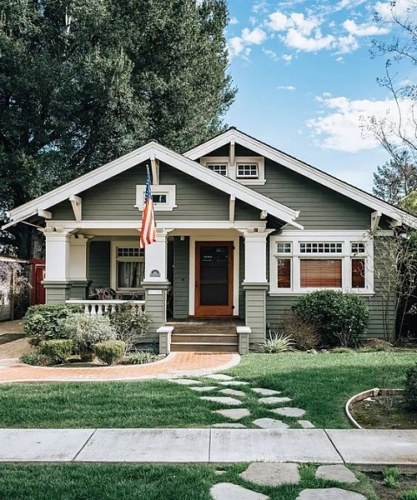The Craftsman house, an iconic architectural style that emerged in the late 19th and early 20th centuries, has a unique and enduring charm that continues to captivate homeowners and enthusiasts alike. Rooted in the Arts and Crafts movement, Craftsman homes are characterized by their craftsmanship, simplicity, and emphasis on handcrafted details.
In this article, we will delve into the history, key features, and enduring appeal of the Craftsman house.
A Brief History of the Craftsman Movement
The Craftsman house style is deeply intertwined with the broader Arts and Crafts movement, which emerged as a response to the excesses of the Victorian era. The late 19th century was marked by industrialization, mass production, and a departure from traditional craftsmanship. In response, the Arts and Crafts movement advocated a return to handcrafted goods and a celebration of skilled artisans.
The movement was spearheaded by prominent figures like William Morris and John Ruskin, who believed in the moral and spiritual value of manual labor. To add, they emphasized the importance of designing and creating functional and aesthetically pleasing objects with meticulous attention to detail.
Key Features of a Craftsman House
1. Low-Pitched Rooflines
Craftsman houses typically feature low-pitched, overhanging rooflines. Also, these roofs often have exposed rafters or decorative braces, creating a distinctive visual appeal.
2. Wide Eaves
The wide, overhanging eaves of Craftsman homes serve both functional and aesthetic purposes. Besides, they provide shade and protection from the elements while adding to the architectural charm.
3. Front Porch
Craftsman houses almost always have a front porch. To add, these porches are often spacious and inviting, encouraging outdoor living and socializing.
4. Exposed Rafters and Beams
Craftsman homes often showcase their structural elements, such as exposed rafters and beams. These elements are not merely functional but also add to the visual appeal of the house.
5. Tapered Columns
The front porch of a Craftsman house is typically supported by tapered, square or round columns. Further, these columns are usually made of natural materials like wood, adding to the handcrafted aesthetic.
6. Double-Hung Windows
Craftsman houses commonly feature double-hung windows with multiple panes in the upper sash. In addition, these windows allow for ample natural light while maintaining a sense of privacy.
7. Built-In Furniture
Interior details are just as crucial to the Craftsman style as exterior elements. Many Craftsman homes include built-in furniture, such as bookcases, benches, and cabinets, often made from rich, warm wood.
8. Natural Materials
Craftsman houses favor natural materials like wood and stone. Moreover, this choice of materials emphasizes the connection to nature and the importance of skilled craftsmanship.
9. Earth Tones
Craftsman interiors often feature earthy color palettes, with hues of brown, green, and ochre dominating the color scheme. Also, these warm, inviting colors contribute to the cozy atmosphere.
The Enduring Appeal of Craftsman Houses
Craftsman houses have an enduring appeal for several reasons. First and foremost, they represent a departure from the ostentatious and ornate designs of the Victorian era. Besides, the Craftsman style embodies simplicity, functionality, and a return to the values of handcrafted quality. As well, this timeless quality continues to resonate with homeowners who appreciate the beauty of well-made, practical homes.
Additionally, Craftsman houses frequently provide a sense of warmth and coziness. Furthermore, the emphasis on natural materials, earthy colors, and built-in furnishings fosters an inviting and comfortable living space. Many people find themselves attracted to the concept of a home that offers a retreat from the hustle and bustle of the modern world.
Moreover, Craftsman houses feature a unique blend of indoor and outdoor living. The spacious front porches, often adorned with comfortable seating, entice residents to embrace the outdoors while maintaining their connection to their homes.
In conclusion, a Craftsman house does not merely represent a style of architecture; rather, it celebrates craftsmanship, simplicity, and a connection to nature. Its enduring appeal stems from its timeless design principles that still resonate with homeowners who seek a harmonious blend of beauty, comfort, and functionality in their homes. Whether you are a homeowner or an architecture enthusiast, the Craftsman house serves as a testament to the lasting value of skilled craftsmanship and thoughtful design.
Explore 12 Mid-Century Modern Homes By Famous Architects for more inspirational ideas.

Satin & Slate Logo
About Us:
Founded in 2017, Satin and Slate is one of the elite interior design studios in Southern California. Located in Long Beach, this dedicated team of designers oversees from kitchen and bathroom renovations to commercial projects. Equipped with their own showroom/studio they can satisfy the needs of any client. Featuring clean lines, bright colors and fresh ideas Satin and Slate’s mission is to bring your vision to life and help transform your space into something extraordinary.







